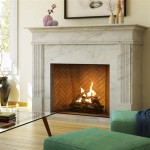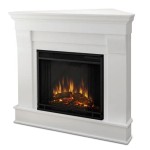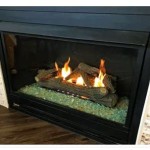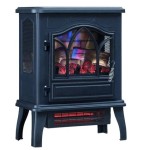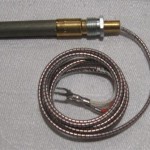```html
Electric Fireplace Heater Not Working: Troubleshooting and Solutions
Electric fireplaces offer a convenient and aesthetically pleasing alternative to traditional wood-burning fireplaces. They provide supplemental heat without the need for chimneys, venting, or fuel storage. However, like any electrical appliance, electric fireplaces can encounter problems, particularly with their heating function. When an electric fireplace heater stops working, it can be frustrating, especially during colder months. This article will delve into the common reasons why an electric fireplace heater might fail and provide systematic troubleshooting steps and potential solutions.
Power Supply and Basic Checks
The first step in troubleshooting a non-functional electric fireplace heater is to verify the power supply. A common oversight is a simple issue with the power source itself. Begin by confirming that the electric fireplace is plugged securely into a functioning electrical outlet. Test the outlet with another device, such as a lamp or phone charger, to rule out any problems with the outlet itself. If the outlet is not working, check the circuit breaker corresponding to that outlet in the electrical panel. A tripped breaker will need to be reset. If the breaker trips repeatedly, it indicates a potential overload or short circuit in the wiring and requires the attention of a qualified electrician.
Many electric fireplaces come equipped with a power switch, often located on the side or back of the unit. Ensure that this switch is in the "on" position. Some models also have a master power switch in addition to the controls for the flame effect and heat. Verify that all power switches are engaged. Examining the power cord for any signs of damage, such as cuts, frayed wires, or exposed conductors, is also crucial. A damaged power cord can pose a significant electrical hazard and should be replaced immediately by a qualified professional.
Furthermore, check if the electric fireplace utilizes a remote control for operation, particularly for the heating function. Ensure that the remote has fresh batteries and that it is properly paired with the fireplace unit. Attempt to operate the heater using the manual controls on the fireplace itself to eliminate the remote control as the source of the problem. If the manual controls work, the issue likely lies with the remote or its receiver within the fireplace.
Thermostat and Safety Features
Electric fireplaces rely on thermostats to regulate the heating output and maintain the desired room temperature. A malfunctioning thermostat can prevent the heater from activating or can cause it to shut off prematurely. Most electric fireplaces have an adjustable thermostat knob or digital display that allows users to set the desired temperature. Ensure that the thermostat is set to a temperature higher than the current room temperature. If the thermostat is set too low, the heater will not turn on.
Many electric fireplaces incorporate safety features, such as an overheat protection sensor, to prevent the unit from overheating and potentially causing a fire. If the fireplace overheats, this sensor will automatically shut off the heater. Allow the fireplace to cool down completely for at least 30 minutes before attempting to restart it. Obstructions to the airflow around the fireplace can contribute to overheating, so ensure that the vents are not blocked by furniture, curtains, or other objects. Dust accumulation within the fireplace can also impede airflow and lead to overheating. Regularly clean the vents and interior of the fireplace with a vacuum cleaner or soft brush to maintain proper ventilation.
Some electric fireplaces have a tilt switch that automatically shuts off the heater if the unit is tilted or tipped over. This is a safety feature to prevent fires in the event of accidental displacement. Ensure that the fireplace is placed on a stable, level surface. If the unit is slightly tilted, it may trigger the tilt switch and prevent the heater from functioning. Adjust the position of the fireplace to ensure it is sitting upright and level.
Heating Element and Internal Components
The heating element is the core component responsible for generating heat within the electric fireplace. Over time, heating elements can burn out or become damaged, resulting in a loss of heating function. Accessing the heating element typically requires removing the back panel of the fireplace. Exercise caution when disassembling the unit, and always disconnect the power cord to prevent electrical shock. Visually inspect the heating element for any signs of damage, such as broken coils, discoloration, or burn marks. If the heating element is damaged, it will need to be replaced. Replacement heating elements are typically available from the manufacturer or from appliance parts suppliers.
In addition to the heating element, other internal components can also contribute to heating problems. The blower motor, which circulates air over the heating element and distributes warm air into the room, can fail or become clogged with dust and debris. A failing blower motor will often produce unusual noises or operate at a reduced speed. Clean the blower motor with a vacuum cleaner or compressed air to remove any dust or debris that may be obstructing its operation. If the blower motor is severely damaged, it will need to be replaced.
Wiring connections within the electric fireplace can also become loose or corroded over time, leading to intermittent or complete loss of heating function. Carefully inspect the wiring connections inside the unit, paying particular attention to the connections to the heating element, thermostat, and blower motor. Tighten any loose connections and clean any corroded connections with a wire brush or electrical contact cleaner. If the wiring is severely damaged, it will need to be replaced by a qualified electrician.
A thermal cut-off switch or fuse is another safety device that protects the electric fireplace from overheating. If the unit overheats, the thermal cut-off switch will trip, interrupting the power supply to the heating element. Locate the thermal cut-off switch, which is typically located near the heating element. Allow the unit to cool down completely, then reset the thermal cut-off switch by pressing the reset button or replacing the fuse. If the thermal cut-off switch continues to trip, it indicates a persistent overheating problem that requires further investigation.
Some electric fireplaces utilize printed circuit boards (PCBs) to control the various functions of the unit, including the heating function. A malfunctioning PCB can cause a variety of problems, including a failure to turn on the heater or an inability to regulate the temperature. Diagnosing PCB issues can be complex and often requires specialized knowledge and equipment. If the PCB is suspected to be the cause of the problem, it is best to consult with a qualified technician or electrician who has experience repairing electric fireplaces.
Before undertaking any repairs, it's recommended to consult the user manual for specific troubleshooting steps and safety instructions. The user manual may also provide information on warranty coverage, which could cover the cost of repairs or replacement if the fireplace is still under warranty. If the troubleshooting steps outlined in this article do not resolve the issue, or if the user is uncomfortable performing electrical repairs, it is best to seek professional assistance from a qualified technician or electrician. Attempting repairs without proper knowledge and experience can be dangerous and may void the warranty.
Electric fireplaces are generally safe and reliable appliances, but they do require occasional maintenance and troubleshooting. By following the systematic approach outlined in this article, users can often diagnose and resolve common heating problems, restoring their electric fireplace to full functionality.
```
Electric Fireplace Not Blowing Heat

Electric Fireplace Repair Dimplex

How I Fixed My Electric Fireplace For Free Fix Most Inserts 30 Or Less

Electric Fireplace Common Problems And Their Solutions

5 Common Problems With Electric Fireplaces And How To Fix It Vevor Blog

How To Fix The Flame On An Electric Fireplace Universe

Troubleshooting Guide How To Fix Electric Fireplaces With No Heat Sweet Home Vibes

How To Fix Electric Fireplace With No Heat Dreifuss Fireplaces

Heat Surge AccÉnt User Manual Manualslib

18 Freestanding Electric Fireplace Heater Recessed Stove With Adjustable Led Flame Insert Safer Plug And Sensor Remote Control Console Center Not Included Com
Related Posts

